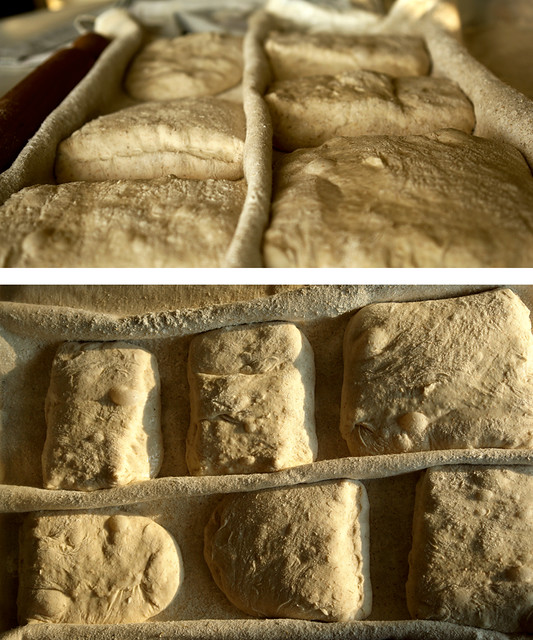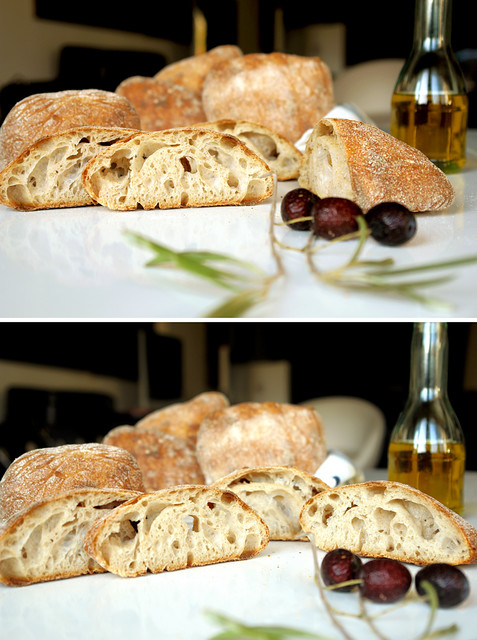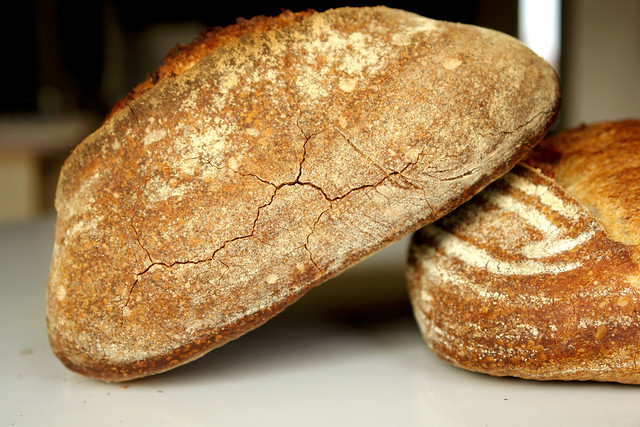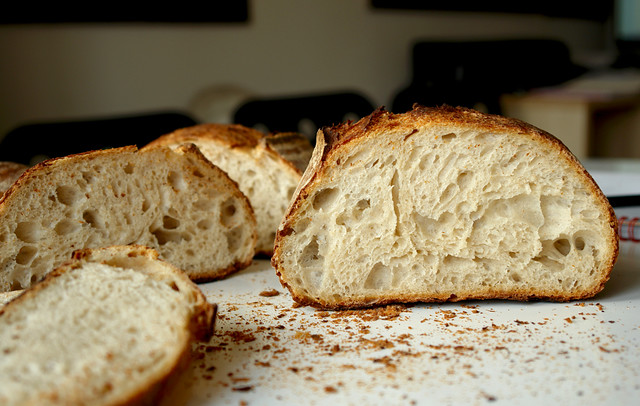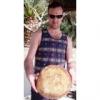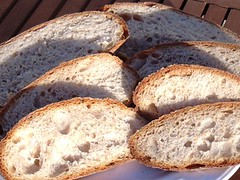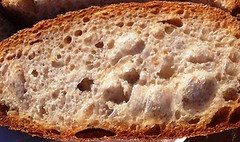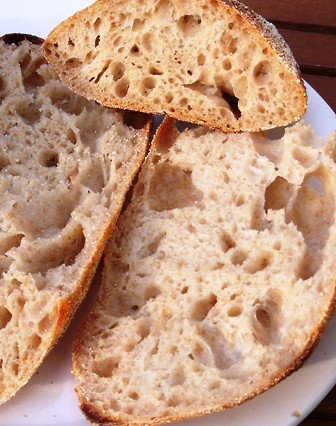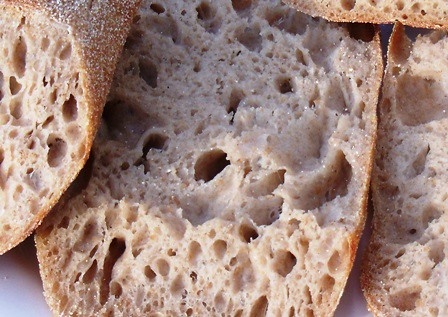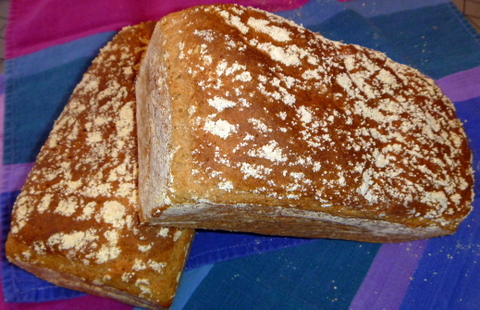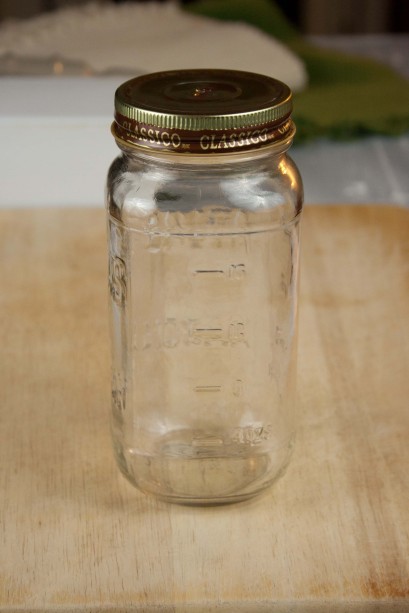
Blitz puff pastry for pie crust? Yes!
Hi everyone,
Seems like EVERYONE making pies is looking for the flaky pie crust, layers and layers that fall apart as you cut into it. Why, then, are cookbooks and tutorials filled almost exclusively with shortening crusts where Crisco is broken into tiny, tiny "pea-sized" shapes and the dough is kneaded until it's nice and smooth. And even the same for butter crusts, cutting and cutting the butter until it resembles "cornmeal." I'm never impressed. After working in a bakery for a bit, I decided to do a little experimenting. I liked the recipes for basic pate brisee, but wanted something a little flakier. Much flakier. Blitz puff pastry.
Blitz puff pastry, flakier than regular pie dough but not as flaky and puffy as the classic version. We all know it, but I don't think it's thought of for use as pie crust. It has everything you want. A thousand layers that flake as you cut into it, they melt in your mouth as soon as you bite into it. So, why not use blitz puff pastry? Why is it never mentioned when discussing pie crusts? It works, it makes pie crust flaky, and it's simple. Here's my recipe, adapted from The Professional Pastry Chef (Friberg).
Makes enough for 2 or 3 pie shells
570 g King Arthur AP flour
570 g cold butter
1 1/2 teaspoons salt
180 mL cold water
1. Whisk the flour and salt together in a stand mixer bowl.
2. Cut the butter into large, 1-inch by 1-inch cubes. Add to the flour mixture. Mix on lowest speed for about 20 to 30 seconds with the paddle attachment until the butter is flattened (it will look like thick sheets). Stop the mixer and push any remaining unflattened cubes of butter between two fingers until they become flat. The butter should still be in very large, flat pieces.
3. Add the water all at once. Mix on lowest speed for 15-20 seconds, until the dough is BARELY coming together. It will be an absolute shaggy mess of big sheets of butter, wet pieces of dough and dry flour mixture. STOP mixing at this point and empty the bowl onto a clean, lightly floured countertop.
4. Using your hands, gently form the mass into a very rough rectangle, maybe 5 inches by 9 inches or so (and 1 to 2 inches thick). It will still be a shaggy, wet, dry, butter cubed mess at this point. That is perfect. Let it rest on the counter for 10 minutes.
5. Here it's a little tricky. Using a bench knife, collect any dry/wet errant pieces on the sides of the rectangle of dough and add them to the top of the dough. Using a rolling pin, roll the dough out to a larger rectangle 3/4 inch or so thick, flouring lightly as needed. Use the bench knife as needed to coaxe renegade scraps of dough back onto the mass. It will still be shaggy at this point. Give the dough a 3-fold as best as you can, as you would with croissant dough. Immediately perform 2 more 3-fold turns, followed by one 4-fold turn, all the while adding to the rectangle any dry or wet pieces that fall off. By the end of the final turn, the dough will be mostly smooth and completely incorporated. You should see large sheets of butter throughout the dough. DO NOT add any extra water at anytime throughout this process.
6. Perhaps the most important step. Wrap the dough and chill in the refrigerator for at least 2-3 hours, until the dough is very firm. The butter must be thoroughly chilled at this point to create the layers you desire.
7. Roll out the dough gently and use as you would any other pie dough, being careful to handle it gently so as to preserve the layers of butter and dough (never push on the dough with your hands or fingers). (Note: I find that using disposable aluminum pie tins yield much more tender and flaky crusts than ceramic or glass ones, which seem to bake the crust too quickly and leave it hard and tough).
Next time you're making a pie, consider it. Tell me what you think. Use this recipe or one of your own and try lining your pie tin with blitz. I'm eating a blitz puff pastry pie right now.
The result?

a bite-sized piece from the crimped edges of a pecan pie











